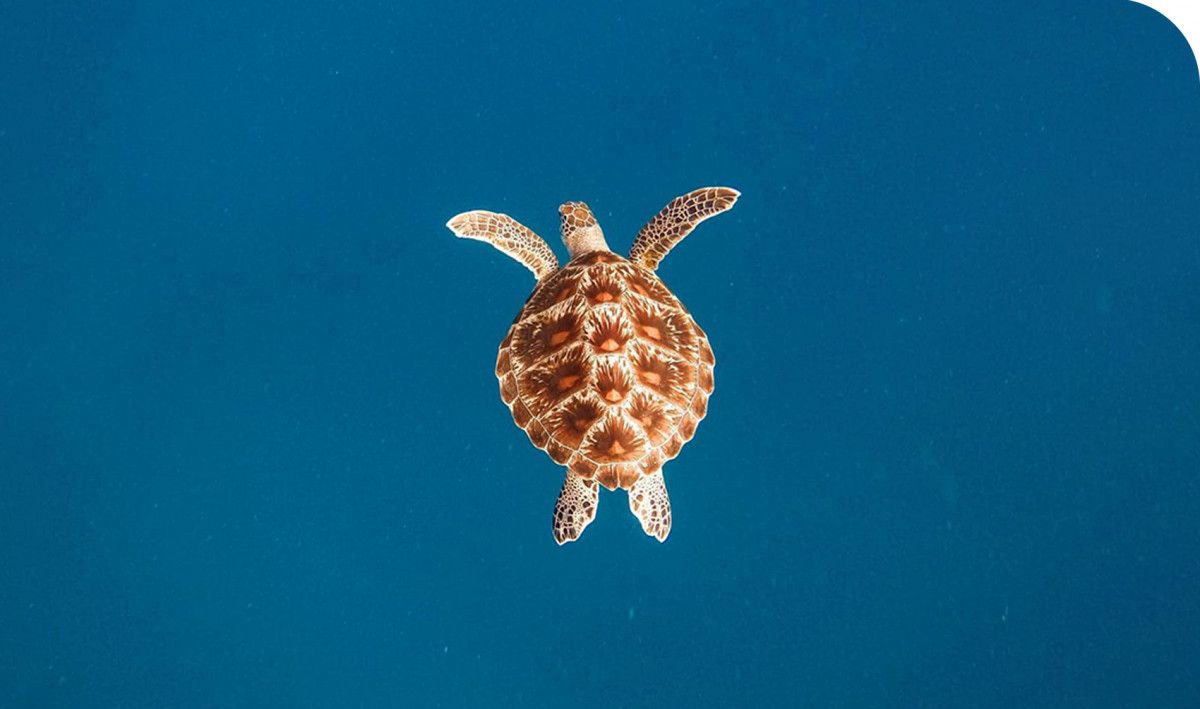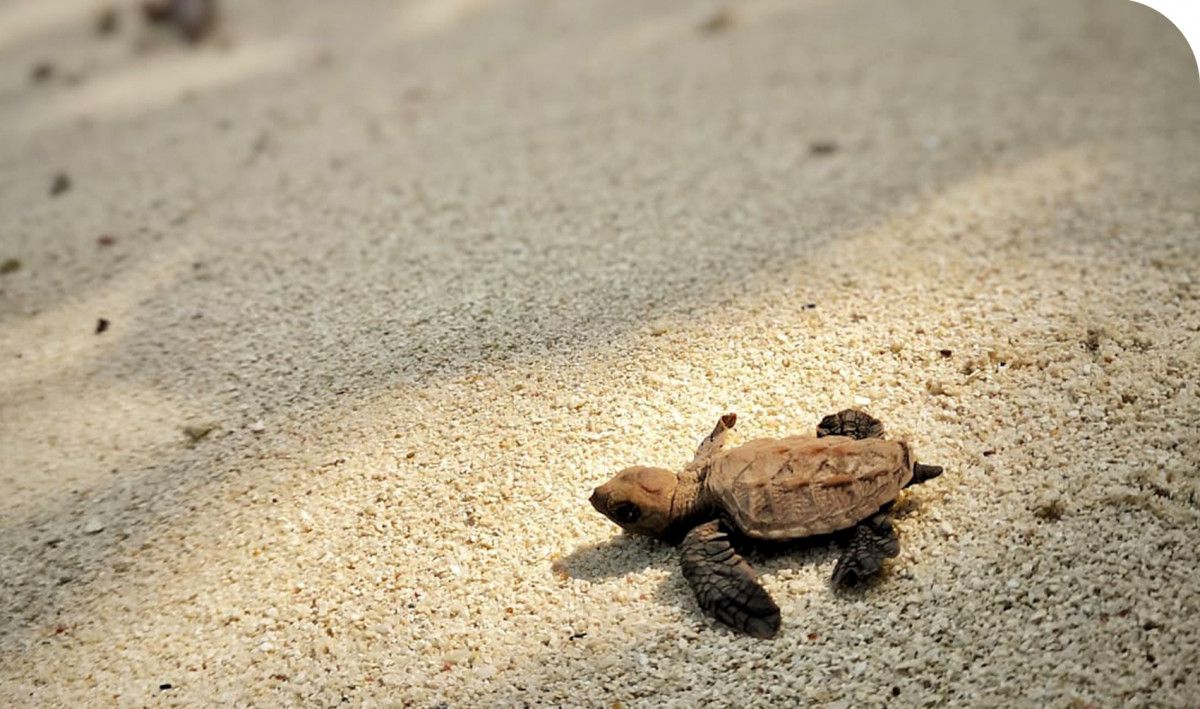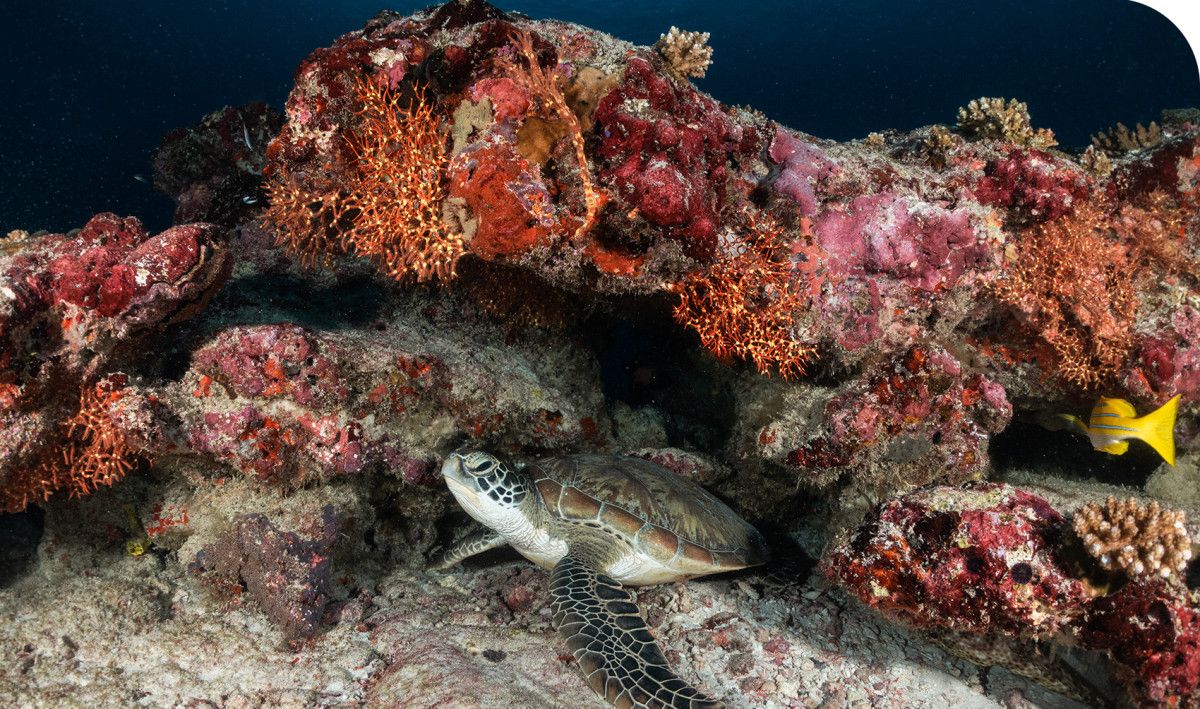Experience
Encounters with The Ancient Sea Turtles in the Maldives

__hayyan__ ( waiting for permission )
Sea turtles are an ancient species. These strange creatures have roamed and voyaged across the world’s oceans for over 100 million years and have remained virtually the same. Turtles shared the world with dinosaurs, woolly mammoths, and the infamous megalodons. These precious reptiles play a significant role in maintaining healthy oceans. Leatherback turtles consume large numbers of jellyfish which keeps their population in check. The nutrients left behind by eggs and hatching is an important source for coastal vegetation. Green sea turtles maintain healthy seagrass, and hitchhikers such as barnacles, small crustaceans, algae and diatoms hop on the sea turtles back during their long migrations.

Approximately 66 million years ago, a sudden mass extinction event called ‘The Cretaceous-Paleogene’ wiped out three-quarters of the plant and animal species on Earth. No tetrapods weighing over 25 kilograms survived. Except for sea turtles and crocodilians, that is. Unfortunately, mammals (specifically Homo sapien sapien) pose a far greater threat to the sea turtles than any of the predators or extinction events. Coastal development, pollution, illegal poaching, vessel strikes, and our role in the climate crisis threatens the fragile future of sea turtles, deeply intertwined with our own future. Their survival is our survival. It is up to us to reshape our relationship with these dignified creatures, and a gentle and safe encounter can remind oneself of the majesty of these animals. Read on to learn about sea turtles, the threats they face, and how (and where) to have a safe encounter with the sea turtles.
Species of Turtles in the Maldives

Zexmayn, transmaldivian (waiting for image usage permission)
The Maldives, an island-nation comprising 99% water, boasts some of the most surreal and beautiful waters in the world. These coral islands are home to thousands of species of fish, corals, crustaceans, and other critters engaged in a delicate symbiotic dance. Naturally, sea turtles have made themselves at home in the turquoise waters of the Maldives. At least temporarily, for voyagers and adventurers never completely settle. 5 out of 7 marine turtles are found in the Maldives, with only the green sea turtle and the endangered hawksbill turtle seen commonly across the country.
Turtle trade and consumption has been banned in the Maldives since 2016, under the Environmental Protection and Preservation Act (Number 4/93) Section (A). Efforts to legally protect sea turtles began earlier in 1995 with a Presidential Decree banning catching and killing of any species of sea turtle in Maldives.

In the Maldives, the first National Red List Assessment of Marine Reptiles was conducted by the Ministry of Environment, Climate Change and Technology, with support from the International Union for Conservation of Nature and USAID, with data collected from the Olive Ridley Project. The list classified hawksbills as critically endangered, greens as endangered, and olive ridley, loggerheads, and leatherbacks as data deficient. Despite records of 4336 hawksbills and 1292 green sea turtles by ORP, hawksbills are classified as critically endangered as the current turtle population in the country is predominantly juvenile, and there are very few instances of hawksbills nesting in the country. Green sea turtles, despite being seen less frequently than hawksbills, are recorded nesting nationwide.
A Sanctuary for Sea Turtles

The rich and delicate underwater ecosystems provide shelter and sustenance for various species of sea turtles. Coral reefs provide resting and foraging grounds for the globally critically endangered hawksbill - one reason one can encounter hawksbills nationwide. The oft-overlooked seagrass meadows are a vital food source for the endangered green sea turtle which are primarily vegetarian as adults. The lush meadows are also an important site for juveniles. Despite being geographically dispersed and small, the iconic sandy white beaches of the Maldives make for viable nesting sites, especially for the green sea turtle.
There are yet many answered questions about sea turtles in the Maldives, such as their relation to sea turtles in other parts of the Indian Ocean, their historical population size, and the differences (if any) between them and the sea turtles in neighbouring nations.
Encountering Sea Turtles in the Maldives
One can encounter sea turtles nation-wide in the Sunny Side of Life!

North Malé Atoll, Ari Atoll and Baa Atoll are hotspots for the critically endangered hawksbill turtle whereas Lhaviyani, Laamu, and Baa atoll are hotspots for the endangered green sea turtle. On the other hand, Hawksbill turtles can be found in every atoll in the Maldives. One can encounter hawksbill turtles in shallow reef areas while they are foraging. One can also find them resting in deeper and outer reefs, and occasionally even hidden in the lush seagrass beds. The green sea turtle is commonly only found in Lhaviyani Atoll, Laamu Atoll, and Baa Atoll, where the species can be seen foraging in seagrass meadows or resting under overhangs on the reef at a wide range of depths.
The best sites to see turtles in the Maldives are:
- Dive and snorkels sites near Kuredu Maldives, Lhaviyani
- Dive and snorkel sites next to Hithadhoo, Laamu
- Snorkel sites next to Makunudhoo island, and Coco Palm Bodu Hithi in North Malé
- Snorkel and dive sites on the outer reef of Dhigurah-Dhidhdhoo lagoon in Ari
- Gemanafaru reef in Raa atoll
- Gaakoshibee reef in Shaviyani atoll
An encounter with a sea turtle is a precious moment. One should remember that they are encountering a species that has lived on this planet far longer than we have. Their role in the ecosystem is paramount and their future and survival is fragile. Therefore, it is crucial that one takes the utmost care and respect when encountering a sea turtle. Please read the code of conduct to make sure your encounter is safe, sustainable, and healthy for both yourself and the sea turtle.
Vaavoshi Festival 2022
On 29th October 2022, The Olive Ridley Project hosted a multi-atoll celebration of sea turtles, marine habitats, and environmental conversation. The Vaavoshi Festival 2022 took place simultaneously across atolls in the biggest celebration of turtle conservation in the country. The festival was held at N. Lhohi, R. Fainu, B. Goidhoo, Lh. Hinnavaru, K. Hura, K. Maafushi, V. Keyodhoo, and S.Feydhoo. Under the banner of LaamaFaru Festival 2022, activities will be conducted in Laamu Atoll at: L. Gan, L. Fonadhoo, L. Isdhoo, L. Maamendhoo, L. Maabaidhoo, L. Kunahandhoo, L. Kalaidhoo.
The festival invited young children, students, young adults, parents, community members, and turtle and marine conservation enthusiasts to learn about the marine environment, key habits, and ecosystems, species and status of sea turtles in the Maldives, threats faced by marine life, and will pledge to protect environmental and marine habitats and marine creatures.
Poster designs, cleanups, conservation conversation, treasure hunts, sculpture competitions, and parades are just some of the many thrilling activities were held during Vaavoshi Festival 2022.